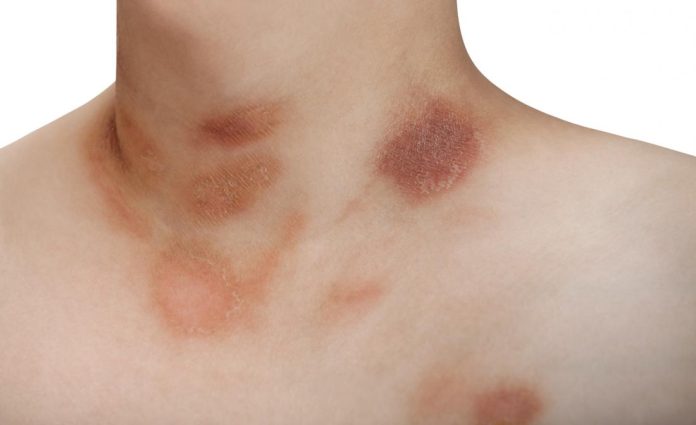Ayurvedic Insights into the Treatment of Pityriasis: Focusing on Pharmacodynamics and Pharmacokinetics
Pityriasis encompasses several skin conditions characterized by flaky, scaly patches, including Pityriasis Rosea, Pityriasis Alba, and Pityriasis Versicolor. Although not life-threatening, these conditions can cause significant discomfort and aesthetic concerns. Ayurveda, the ancient Indian system of medicine, offers a holistic approach to treating Pityriasis through various herbs. Analyzing the pharmacodynamics and pharmacokinetics of these Ayurvedic herbs is essential for understanding their therapeutic efficacy and safety in managing Pityriasis.
Introduction to Ayurvedic Pharmacodynamics and Pharmacokinetics
Pharmacodynamics involves the effects of a substance on the body, including its mechanism of action and the relationship between its concentration and effect. Pharmacokinetics covers the absorption, distribution, metabolism, and excretion of substances. In Ayurveda, the pharmacodynamics of herbs are explained through concepts like Rasa (taste), Guna (qualities), Virya (potency), Vipaka (post-digestive effect), and Prabhava (special effect). These principles guide the selection and application of herbs for treating conditions like Pityriasis.
Key Ayurvedic Herbs for Pityriasis Treatment
Several Ayurvedic herbs are well-known for their efficacy in treating skin conditions like Pityriasis. Each herb has unique pharmacodynamic and pharmacokinetic properties that contribute to its therapeutic effects.
1. Neem (Azadirachta indica)
Pharmacodynamics:
- Rasa (Taste): Bitter (Tikta), Astringent (Kashaya)
- Guna (Qualities): Light (Laghu), Dry (Ruksha)
- Virya (Potency): Cold (Shita)
- Vipaka (Post-digestive effect): Pungent (Katu)
- Prabhava (Special effect): Antimicrobial, anti-inflammatory, detoxifying
Neem is renowned for its powerful antimicrobial and anti-inflammatory properties. It helps in reducing inflammation, preventing infections, and detoxifying the blood, making it highly effective for treating Pityriasis.
Pharmacokinetics:
- Absorption: Neem constituents are well-absorbed through the gastrointestinal tract.
- Distribution: Active compounds are distributed throughout the body, particularly in skin tissues.
- Metabolism: Neem is metabolized in the liver.
- Excretion: Metabolites are primarily excreted through urine.
Shloka Reference: “Nimbasara rasa kashaya tiktaka pitta kaphapaham| Kandughnam kushthghnam shulam jvarpittamlpaditah||”
(Charaka Samhita, Sutrasthana 27.166)
This shloka highlights Neem’s effectiveness in treating skin conditions and its ability to balance Pitta and Kapha Doshas.
2. Turmeric (Curcuma longa)
Pharmacodynamics:
- Rasa (Taste): Bitter (Tikta), Pungent (Katu)
- Guna (Qualities): Light (Laghu), Dry (Ruksha)
- Virya (Potency): Hot (Ushna)
- Vipaka (Post-digestive effect): Pungent (Katu)
- Prabhava (Special effect): Anti-inflammatory, antioxidant, wound healing
Turmeric is highly valued for its anti-inflammatory and antioxidant properties, making it an excellent herb for managing inflammatory skin conditions like Pityriasis.
Pharmacokinetics:
- Absorption: Curcumin, the active compound in turmeric, has low oral bioavailability but is enhanced with black pepper (piperine).
- Distribution: Curcumin is widely distributed, particularly in the liver and intestines.
- Metabolism: Curcumin undergoes extensive first-pass metabolism in the liver.
- Excretion: Metabolites are excreted primarily through feces.
Shloka Reference: “Haridra tiktaka kashaya katu ushna laghu ruksha| Pittasrajit kushthajit kapha vidradhi medajit||”
(Sushruta Samhita, Sutrasthana 38.11)
This shloka describes Turmeric’s properties and its effectiveness in treating skin diseases and balancing Doshas.
3. Aloe Vera (Aloe barbadensis)
Pharmacodynamics:
- Rasa (Taste): Bitter (Tikta)
- Guna (Qualities): Light (Laghu), Unctuous (Snigdha)
- Virya (Potency): Cold (Shita)
- Vipaka (Post-digestive effect): Sweet (Madhura)
- Prabhava (Special effect): Cooling, anti-inflammatory, skin healing
Aloe Vera’s cooling and soothing properties are beneficial for treating inflammatory and burning sensations associated with Pityriasis.
Pharmacokinetics:
- Absorption: Aloe vera gel is readily absorbed through the skin.
- Distribution: Active compounds are distributed in the skin and gastrointestinal tract.
- Metabolism: Aloe is metabolized in the liver.
- Excretion: Metabolites are excreted through urine.
Shloka Reference: “Kumari tikta kashaya madhura sheeta laghva| Daha kushthajit pittatrijit visarpa kapha vinashini||”
(Charaka Samhita, Sutrasthana 4.36)
This shloka highlights Aloe Vera’s cooling and healing properties, making it effective for skin conditions.
4. Manjistha (Rubia cordifolia)
Pharmacodynamics:
- Rasa (Taste): Bitter (Tikta), Astringent (Kashaya)
- Guna (Qualities): Light (Laghu), Dry (Ruksha)
- Virya (Potency): Cold (Shita)
- Vipaka (Post-digestive effect): Pungent (Katu)
- Prabhava (Special effect): Blood purifier, anti-inflammatory
Manjistha is renowned for its blood-purifying properties, making it effective in treating various skin conditions by detoxifying the body.
Pharmacokinetics:
- Absorption: Manjistha is well-absorbed through the gastrointestinal tract.
- Distribution: Active compounds are distributed in the bloodstream and skin tissues.
- Metabolism: Manjistha is metabolized in the liver.
- Excretion: Metabolites are excreted through urine.
Shloka Reference: “Manjistha tikta kashaya pittaraktavikarina| Varna prasadani hanti kushtha visphota rakta roh||”
(Charaka Samhita, Sutrasthana 4.13)
This shloka underscores Manjistha’s role in purifying the blood and treating skin diseases.
Integrating Ayurvedic Principles with Modern Pharmacology
Ayurveda’s holistic approach to treating skin conditions like Pityriasis involves understanding the synergistic effects of herbs through their Rasa, Guna, Virya, Vipaka, and Prabhava. Integrating these principles with modern pharmacology enhances the understanding of the pharmacodynamics and pharmacokinetics of Ayurvedic herbs, thereby improving their therapeutic efficacy and safety.
Conclusion
Ayurveda offers a comprehensive and holistic approach to managing Pityriasis through various herbs. Understanding the pharmacodynamics and pharmacokinetics of these Ayurvedic herbs provides valuable insights into their therapeutic efficacy and safety. By integrating ancient Ayurvedic principles with modern pharmacology, healthcare practitioners can enhance treatment outcomes for Pityriasis and other skin conditions. The timeless relevance of Ayurveda in contemporary healthcare highlights its potential in offering natural and holistic solutions for managing dermatological conditions.
Related-
Know More About Ayurveda Treatment For Pityriasis
GET IN TOUCH


Recent comments